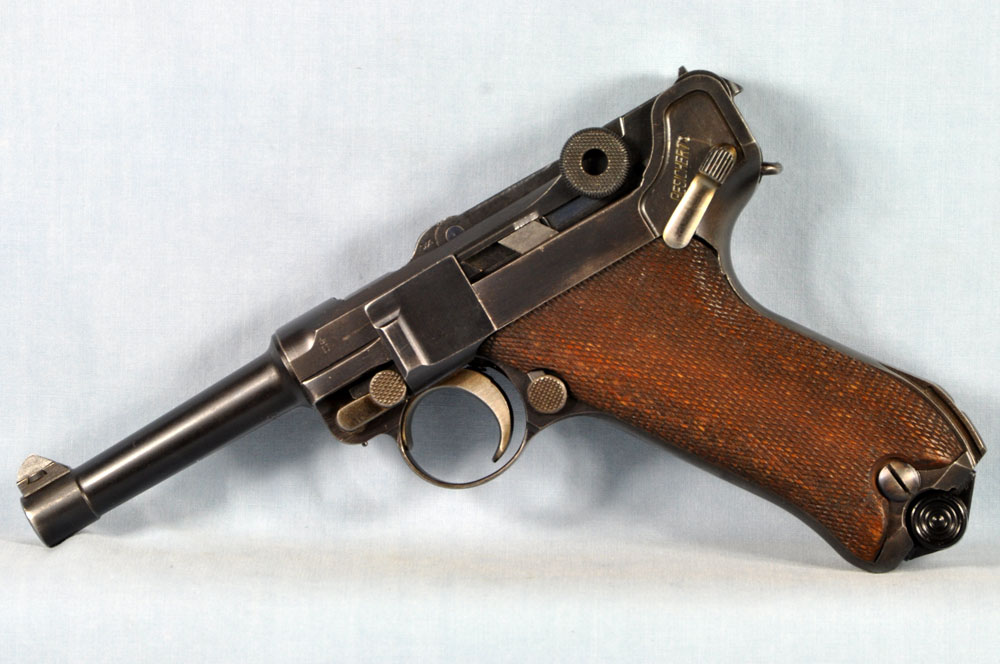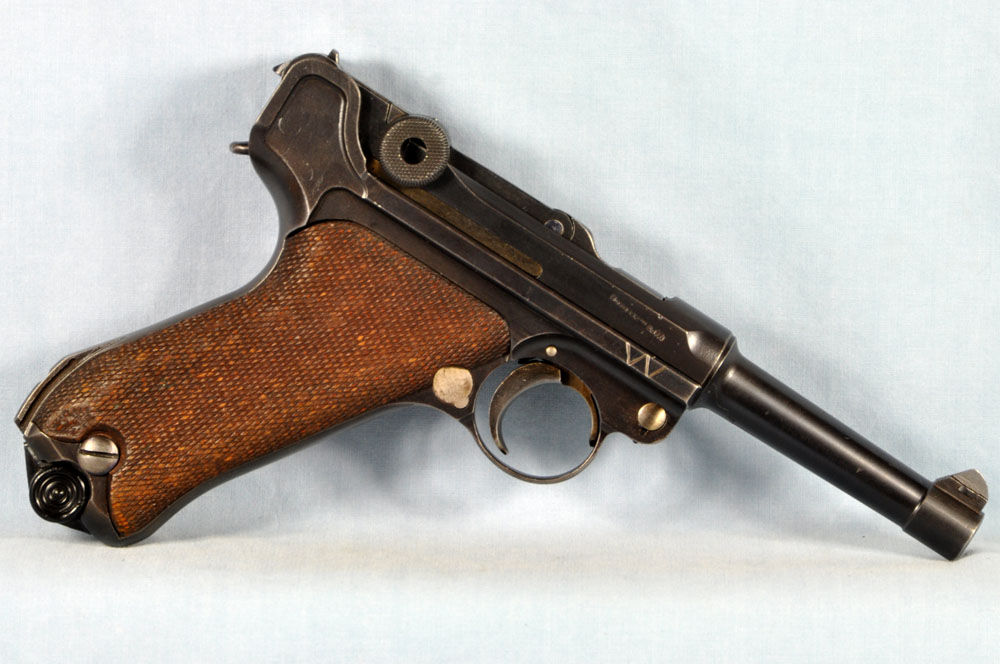Today is a good day to check in with my latest report (or non-report) as the case may be.
When I left off in January I reported good success with the Rainier bullets sized to .3095" and loaded in Fiocci brass ahead of a Remington small pistol primer and 5.2 grains of SR4756, at an OAL of 1.142". These functioned perfectly in my Sig P210 and rendered accuracy as good as Fiocci factory ammunition. They shot extremely clean, leaving no fouling in the bore. My intent was to try this load in a Luger, and I promised a report to the forum.
This is really a non-report for the reason I am about to explain. Even so, it serves a good lesson in safe reloading practice.
I'll start by reciting some history. If you flip back to Page #1 of this thread, you will see I am not the original poster (OP) of this thread. My participation began with Post #7 on July 27, 2011, in which I expressed the idea of trying the Rainier 100 grain plated bullet (along with others). I ordered up a box of 500 of the Rainier bullets and began experimenting. You can follow my progress through the pages of this thread.
On Page #3 of this thread you will notice a hiatus of
more than 7 years. I made Post #49 on August 24, 2011. The next post I made, #50, was a revival of this thread I initiated on January 26, 2019. Several things have happened during the intervening years. Most significantly, I sold the DWM 1920 Commercial 7.65mm I was shooting back then.
Let me tell you a little bit about that gun. It was the
perfect shooter Luger. "Perfect" in this sense means it was in high, almost flawless condition, with a perfect bore,
except for one horrible, disgraceful, wart! Let me show you photos of it:


Yeah, you saw it:
"W".

Well, a "W" such as this has its good points and its bad points. There's only one good point: I knew of the "W" when I bought it, so it factored into the price. The 1920 Commercial is a common variety. They usually can be found at a reasonable price. Let me say the price of this one was less than reasonable. I got it for well under the cost of a "Mix-a-Matic" that has been reblued multiple times by hamfisted Bubba. So in 2008 I bought it as my shooter. And I
liked it.
All of the ammunition reports I made in this thread in the year 2011 concerned loads I fired in this pistol, which I had nicknamed "W" (kinda like our former president).
Not long after my ammunition trials of 2011 a friend cast covetous eyes on "W". In a (foolish) moment of weakness I sold him this wonderful shooter of a Luger.
In the wake of that rash sale I inventoried my collection to find I had nothing chambered in 7.65mm Parabellum I could consider a shooter. I had (and still have) a gorgeous 1900 AE. I showed it to the forum here:
DWM 1900 American Eagle
I don't intend to go bang, bang, banging around with that.
I also had (and still have) an absolutely pristine 1920 Commercial, #7146
l. I would show you some photos, but I haven't taken the time to photograph this beauty. I really didn't want to go bang, bang, banging around with that one either.
More recently I acquired a splendid 1902 Carbine. I showed it to the forum here:
DWM Model 1902 Luger Carbine s/n 50100
I dang sure don't intend to go bang, bang, banging around with that one, and it uses different ammo anyway.
So my experiments with loads for the 7.65mm went dormant . . . until I bought the Sig P210. I told you about that pistol when I re-started this thread in January.
Now my history of the 7+ year hiatus is told, and we are up to the present. My wife would say, "Honey make a long story short." But its too late!
In my last post I reported shooting my loads in the SIG P210, and I made the statement, "Next I'll try them in my DWM Luger." That statement didn't refer to "W", as that pistol is long gone. I had decided to pull the pristine 1920 Commercial out of my safe and give her a go.
Now here's where the lesson is safe reloading practice gets told:
I've never fired my prissy 1920 Commercial I am now talking about. I had some loaded rounds of the exact same recipe as what I had just fired in the SIG P210. I intended to try them in this Luger. I have a lifetime of experience loading ammunition, and I know you don't go to the range with reloaded ammunition without making sure the ammo will freely chamber in the firearm in which you intend to shoot it. So I wanted to try my loaded ammo in the chamber of this Luger I never had fired. Usually I try with sized, but empty brass. With loaded rounds we must observe safety precautions.
If it were a bolt action rifle I would remove the firing pin before chambering a round. In this situation I disassembled my Luger and removed the striker. I then reassembled the toggle train without the striker.
Never forget: The Luger toggle train is capable of firing even when it is off the lower assembly. Just because the gun is apart, it is not safe.
With the striker removed I tried chambering a round in the toggle train. It wouldn't quite close without pressing down on the toggle, telling me this Luger has tighter headspace than the SIG, in which the brass had been previously fired. Contact was being made hard against the shoulder of the case.
Next I went back to the loading bench and adjusted my RCBS sizing die down hard against the shellholder. I sized a fired case from the SIG and found that it still met resistance. Man, that fellow is tight!
Fiocci factory ammo chambers just fine. My obvious solution is to fire some factory ammo in this Luger and load this brass. Another alternative is to begin with unfired brass, of which I have a supply. I haven't done either. The 1920 Commercial is again slumbering in my safe.
Oh, I wish for "W"! There's more than reloading technique in the moral to this story.

Curl